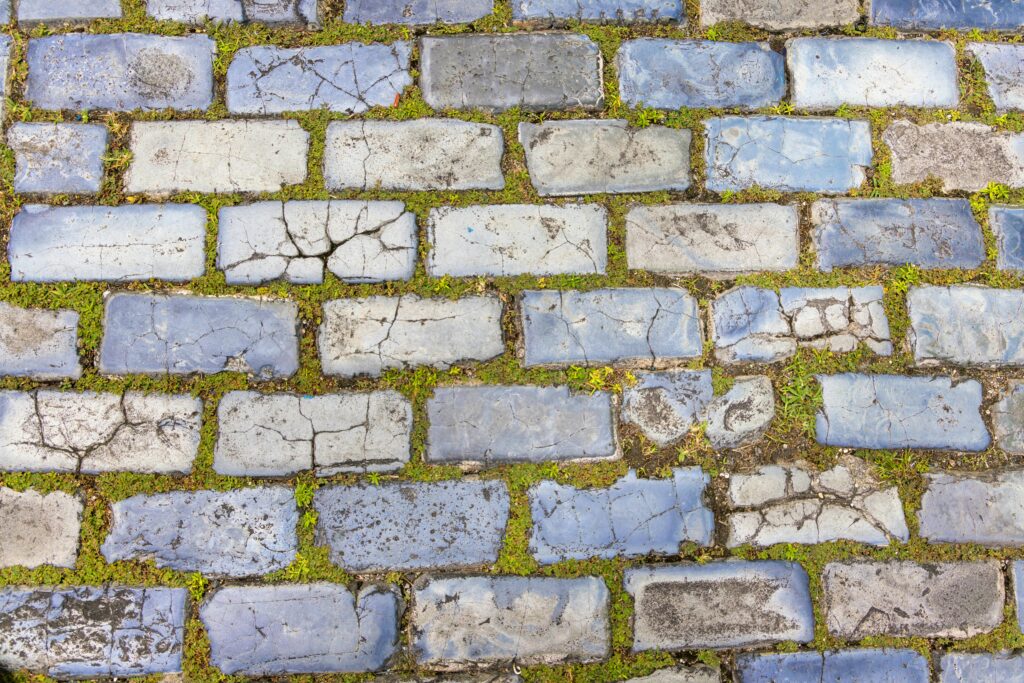Moss can quickly build up on your paving slabs, especially in damp or shaded areas. While it may add a rustic charm, moss can make your paving slippery and unsafe. Removing moss is essential for maintaining the beauty and safety of your Indian sandstone paving slabs and other stone surfaces. In this guide, we’ll explore how to effectively remove moss from your paving and prevent it from returning.
Why Does Moss Grow on Paving?
Moss thrives in damp, shaded areas, which makes paving slabs a prime spot, particularly in the UK’s often rainy climate. If water tends to sit on your paving, or if your slabs are positioned in a shaded area, moss can easily take root.
Steps to Remove Moss from Paving Slabs
1. Sweep the Area
Start by sweeping away any loose debris, leaves, or dirt from the paving. This will make it easier to target the moss and prevent further growth.
2. Use Soapy Water
For small patches of moss, a simple mixture of warm water and washing-up liquid can do the trick. Scrub the moss with a stiff bristle brush, focusing on areas where it has taken root. This method is gentle enough for natural stones like the ever popular Kandla Grey Indian sandstone,
3. Use a Moss Killer
For more extensive moss growth, consider using a moss killer designed for paving. Ensure the product is safe for your stone type, especially for delicate stones. Follow the manufacturer’s instructions and rinse thoroughly after use to avoid residue.
4. Pressure Wash Carefully
A pressure washer can be effective at removing moss, but it must be used carefully, especially on softer stones. Set the pressure washer to a low setting to avoid damaging the stone. For more tips on cleaning paving, check out our guide on how to clean Indian sandstone paving slabs.
Preventing Moss Growth
After removing the moss, taking steps to prevent it from returning will save you time and effort in the long run.
- Sweep regularly to keep the surface free of debris and moisture.
- Ensure proper drainage to prevent standing water, as moss thrives in damp conditions.
- Consider sealing your paving with a high-quality sealant, which creates a barrier against moisture and inhibits moss growth. To learn more about sealing, check out does paving need sealing.
- Allow sunlight to reach your paving if possible, by trimming back overhanging trees or bushes.
FAQs
Can moss damage my paving slabs?
Yes, over time moss can trap moisture, leading to potential damage, particularly in colder months when freezing and thawing can cause cracks. Regular removal is key to protecting your paving.
Can I use a pressure washer on sandstone?
Yes, but be careful with softer stones like Rainbow Indian sandstone. Always use a low-pressure setting to avoid damaging the surface.
How often should I clean my paving to prevent moss?
Sweeping and light cleaning once every few weeks will help prevent moss buildup. For more thorough cleaning, twice a year should suffice. For more advice on maintenance, read our guide on laying paving in the winter.
Removing moss from your paving slabs is essential for maintaining their appearance and safety. By using simple tools like a brush and soapy water or a moss killer for tougher growth, you can keep your Indian sandstone paving slabs clean and moss-free. For long-term protection, consider sealing your paving and ensuring it’s kept dry and debris-free. For more tips, check out our full range of guides, including how to clean Indian sandstone paving slabs and our selection of Indian sandstone paving options.

